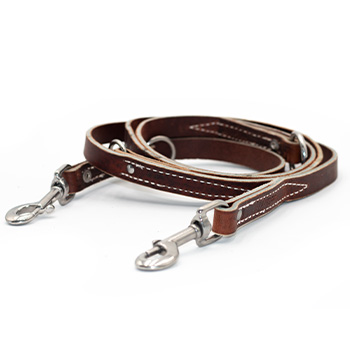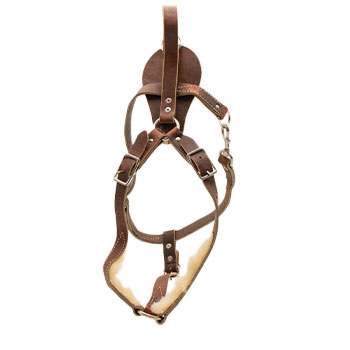May 17, 2011
My mal has started acting differently sense being deployed in Irag, how can I fix his behavior?
Full Question:
Mr. Frawley,How are you doing sir? I am currently deployed to Baghdad, Iraq (VBC). I have a two and a half year old dutch shephard named Barry. We picked him up straight out of Lackland AFB in San Antonio this past August. He is a very high drive dog. He is a fear biter and he is pan aggressive. I have tried to socialize him with people here but for some reason he gets all excited (happy), then just snaps. When we were in Texas (at my home base) this was not an issue but since we have got to Iraq he has changed, not towards me but towards other people. The way I look at it is it's his job to be defensive. Am I looking at this situation in the right way? If I am wrong please let me know. The other issue is his heel. I have tried everything I could possibly think of to get him to walk in the heel of leash and heel to me from my rear (when I am standing in front of him). Your knowledge and expertise in this would be greatly appreciated. Unfortunately I am a rather young dog handler and Barry is a young dog. There is not alot of experienced handlers here at the moment and I would really like to get these deficiances corrected. Everything else he does in patrol, detection, and obedience is great. Thank you for taking the time to read this sir and thank you for all your knowledge that you share so dog trainers and handlers can be more successful. Take care and God Bless.
P.S I was just going to mention (you probably already knew this) but the Navy does not allow electric collar nor pinch collar training. Only choke chain.

 Ed's Answer:
Ed's Answer:
Sometimes when a dog changes environments it can trigger new behaviors. This can especially be true with Mals and Dutch Shepherds. Sounds like this is what happened here.
It is not uncommon that a dog can have high prey drive and still be very sharp.
In fact a dog can have high prey drive and have shitty nerves - these type of dogs can go into avoidance when it's time to bite and become fear bitters.
Just because your dog lights up on someone because he has elevates defense does not make him a fear biter. Frankly it's impossible for me to make a judgment without seeing the dog so I am generalizing and you need to pick what fits.
In your case the correct approach would be to handle the dog with this in mind. Handle him like he will bit any and everyone. If you do this then you should be OK. The bottom line is you are the pack leader and it's the pack leaders job to make sure lower ranking members of the pack have their needs taken care of. In this case the dogs needs are to be left alone. When he sees you preventing strangers from getting close to him he will relax more because he will understand that you will take care of business.
I wrote an article on my web site titled WHO PETS MY PUPPY - it's in an eBook form and on a podcast. The same concept applies to you and your dog.
If you want to get your dog to heel better try "marker training the position" Learn to use food in your work. I wrote an article on marker training (also on a podcast and in a eBook) . Go to my food treats page (not that your going to buy treats from me - you are not but you will glean a few ideas from the streaming video)
Use high value meat treats - ask your cooks for scraps.
Start the marker program from scratch. Teach in these steps:
This is a slow process and take a zillion repetitions. It takes handler patience but it's the foundation to a good heel.>
The reason the Navy doesn't allow remote collars and prong collars is because the people who make the decisions either don't trust their handlers, or they don't understand the work or they don't have the people who can train the handlers.
Bottom line is if you do the foundation correctly you may not need a remote. But I hate to say it but low level stimulation to enforce the work after it's learned goes a long way. In your case I recommend starting very very very slow - don't expect miracles overnight and have patience patience patience.
Good luck and stay safe. My son is a Sgt in the 82nd. Has done a tour in Baghdad - and has now been in the mountains of Afghanistan for 13 months - home in May.
Kind Regards,
Ed Frawley
It is not uncommon that a dog can have high prey drive and still be very sharp.
In fact a dog can have high prey drive and have shitty nerves - these type of dogs can go into avoidance when it's time to bite and become fear bitters.
Just because your dog lights up on someone because he has elevates defense does not make him a fear biter. Frankly it's impossible for me to make a judgment without seeing the dog so I am generalizing and you need to pick what fits.
In your case the correct approach would be to handle the dog with this in mind. Handle him like he will bit any and everyone. If you do this then you should be OK. The bottom line is you are the pack leader and it's the pack leaders job to make sure lower ranking members of the pack have their needs taken care of. In this case the dogs needs are to be left alone. When he sees you preventing strangers from getting close to him he will relax more because he will understand that you will take care of business.
I wrote an article on my web site titled WHO PETS MY PUPPY - it's in an eBook form and on a podcast. The same concept applies to you and your dog.
If you want to get your dog to heel better try "marker training the position" Learn to use food in your work. I wrote an article on marker training (also on a podcast and in a eBook) . Go to my food treats page (not that your going to buy treats from me - you are not but you will glean a few ideas from the streaming video)
Use high value meat treats - ask your cooks for scraps.
Start the marker program from scratch. Teach in these steps:
- ID the value of the work "YES"
- Mark the site behavior without a command
- Add the command
- Mark eye contact
- Add the command "Look" or Watch me" or whatever
- mark the position of sit by your side
- Let that be the recall position or just name it what you want - IE "PLACE"
- keep the food in your left hand and LURE the dog into taking 1 step before you reward (no command here)
- then two steps before you reward. (no command here)
- Then 3 steps - then 10 steps (no heel command)
This is a slow process and take a zillion repetitions. It takes handler patience but it's the foundation to a good heel.>
The reason the Navy doesn't allow remote collars and prong collars is because the people who make the decisions either don't trust their handlers, or they don't understand the work or they don't have the people who can train the handlers.
Bottom line is if you do the foundation correctly you may not need a remote. But I hate to say it but low level stimulation to enforce the work after it's learned goes a long way. In your case I recommend starting very very very slow - don't expect miracles overnight and have patience patience patience.
Good luck and stay safe. My son is a Sgt in the 82nd. Has done a tour in Baghdad - and has now been in the mountains of Afghanistan for 13 months - home in May.
Kind Regards,
Ed Frawley
100% (7 out of 7)
respondents found this answer helpful


Can't find what you're looking for?




